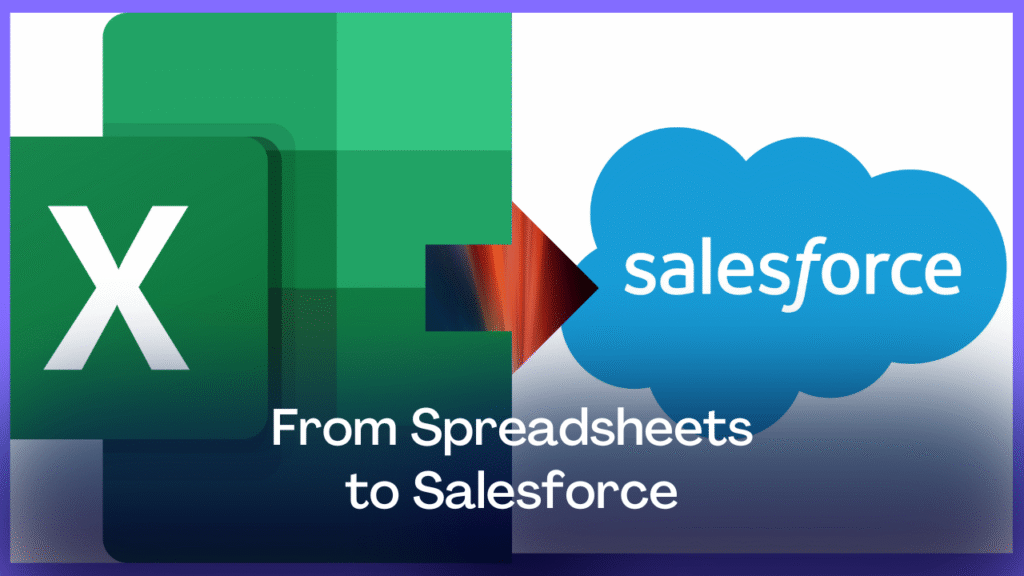5 Signs Your Business Has Outgrown Spreadsheets and Needs Salesforce
Home / Blogs / Why Do Salesforce Partners Focus on Long-Term Value, Not Just Go-Live? 5 Signs Your Business Has Outgrown Spreadsheets and Needs Salesforce [wpcode id=”7147″] Small businesses mainly rely on spreadsheets as they are the easiest, reliable, and cost effective choice. During the earliest stages of any business, spreadsheets work well to do most of the tasks including lead tracking, managing customer list and even monitoring revenue. As the business group from small to the medium and to the large, spreadsheets.work as good as they used to be. In fact, spreadsheets often act as a bottleneck rather than a helpful ally once the business has grown. Employees of any business cannot spend all of their time managing data in these spreadsheets. Due to spreadsheets limitation, managing data may get harder and opportunities can split through cracks causing millions in lost revenue. If this has been your story then you are not the only one out in the world. Many organisations in the world start with spreadsheets and move to different platforms such as Salesforce once they start to grow. In fact, Salesforce has become one of the game changers for a lot of businesses in the world. In today’s article we will explore the five biggest signs your business has outgrown those old spreadsheets and is ready for the next chapter. Sign #1: Data Is Scattered and Hard to Trust Businesses usually maintain different spreadsheets for different departments such as the sales team, marketing team and finance team. At first glance, this may not look bad, but once you start to grow, and your data gets bigger, you do not see the whole up to date version of the truth. You end up with multiple versions of the same file which are harder to maintain, comprehend. For example: As a result of all this, you may lose trust in the data, and time reconciling spreadsheets, and take critical decisions on incomplete or outdated information. How does salesforce solve this confusion? Salesforce is a dedicated platform which is designed to act as a single source of truth for all departments of a company. Every team, every department and even every employee of a company works on the same real time data which is automatically updated. For example, as soon as a sales person updates a lead, the marketing team instantly sees the change and acts accordingly. This goes on and on for every single department of the company, and even the leadership can oversee the latest and updated data in real time. Sign #2: Collaboration Is Slowing You Down In practicality, spreadsheets are built for Solo work, not real-time collaborations in a business environment. Though solutions like Google sheets allow multiple editors to work on a single spreadsheet at one time, in practice, these collaborations cause a lot of chaos. There can be hundreds of different problems with collaborated sheets such as overwritten formulas or conflicted edits. Even with this collaborating technology, the businesses are not seeing many changes in the activity, collaboration, and reporting. Can salesforce solve this confusion? Yes, Salesforce can solve this problem as the platform is designed for collaboration at large scales. The platform is designed in a way so that different teams from different departments can work simultaneously without overriding each other with role-based permission controls. Employees with a specific role or higher control options can control who can view or edit the data. Even track all the changes made by the different employees so that the company will know who updated, what data was updated and when did that happen. Sign #3: Reporting Takes Hours Instead of Minutes Creating reports out of data pulled from multiple spreadsheets can be time-consuming and challenging. Businesses usually require dedicated employees to create those reports by cleaning the data which also comes with different challenges such as managers of different departments spending hours preparing those reports rather than analyzing them, or The data gets outdated even before the reports are ready for the management to see. How can Salesforce help with this problem? The Salesforce Platform is designed to help solve all these problems as it comes with a real-time dashboard and reports management system. Not only can management track your reports, but the management can also track the key performance indicators including conversation rates, case resolutions, and pipeline velocity. In fact, all these reports and key performance indicators update automatically so that the leadership and the management has the latest picture. Experience Salesforce the right way with Avatu – your partner for long-term success! Start Today! Sign #4: Customer Experience Is Inconsistent Inconsistency in customer experience is the prime reason most businesses struggle while working with the spreadsheets. No two teams are able to work on the latest data due to each of those teams maintaining their own sheets. Marketing and sales teams usually miss follow-ups and have inconsistent communication with the customers. In fact, studies have shown that customer retention is harder in businesses without any centralized system to provide better customer experience. Any inconsistency with the customer experience can erode the trust in your business and make it look like an unprofessional and rogue organization. Can Salesforce Improve Customer Experience? Yes, Salesforce can improve customer experience as the whole product is designed putting customers in the center of attention. Every interaction can be tracked at the platform from the lead to all the way to a closed deal. The platform offers a 360-degree customer view, which ensures seamless hands-off and consistent experience throughout the journey. Accelerate your Salesforce success with Avatu’s long-term value strategies! Let’s Talk! Sign #5: Growth Feels Like Chaos Instead of Opportunity As soon as a business starts scaling, spreadsheets are not able to catch up with the world. Instead, it feels like chaos and a headache. In this case, the business is not able to catch up with the world. Instead, it feels like chaos and a headache. For example, a rising business will add new territories or sales








